Bit. It is a bit of an odd word, don’t you think? It is what we unashamedly did to the apple with Adam or Eve (depending on your point of view), what we unashamedly put in a horse’s mouth to control it, and what we use to describe what we do not have much of. The past week has been a bit like this (there’s that word again): a bit of everything or so it seems.
A bit of learning
Last weekend Vicki and I jetted off to Yorkshire, England, to attend a two-day Equine Touch Level 3 Practical training course, the last session we will be attending for the time being until we have completed the truck loads of theoretical work and practical case assessments which we are required to do, if we are to have a hope of qualifying as Equine Touch practitioners at some point in the future. Although briefer than the previous Equine Touch courses which we have attended in the recent past, it was very rewarding in that the focus turned to the technical aspects of the modality with accuracy rating highly on the agenda set out by our instructor, Emma Knowles. It was only possible to do this now, because our knowledge of equine anatomy and biomechanics has finally developed sufficiently to allow this.
We were very fortunate and grateful to have a number of horses on whom to practise the new procedures and techniques which we learned. Again, it was particularly rewarding to see how well they responded to The Equine Touch. Still, recently I find myself with the nagging feeling that, although evidently beneficial to the horse, this modality largely remains a palliative and will continue to do so as long as owners insist on treating their horses as little more than tools for the pursuit of their own interests and on raising and keeping them in a manner which creates the very conditions that cause the problems addressed by The Equine Touch. I console myself with the thought that, except in those rare cases where it is so distressed that it cannot even tolerate The Equine Touch, a horse usually benefits from the application of this gentle modality, even if only until the next time that its human insists on a bit of fun at its expense.
A bit of culture
The Equine Touch course was given on a farm close to Harrogate, a charming spa town which is in turn not too far from York, a city that has played a pivotal role in British – and even European – history since it was founded by the Romans as Eboracum. It was here that Constantine the Great, the first Christian emperor of Rome, found himself when he succeeded to his title. The name comes Jorvik, the name given to the place when the Vikings established their headquarters there. It was from here that the great house of York fought and succumbed to the house of Lancaster at the hands of Henry Tudor in the Wars of the Roses when Richard III was slain in battle in 1485. And it was also here where the notorious Catholic plotter, Guy Fawkes, was born and bred. Extensive evidence of York’s historical roots can be seen throughout the city, amongst other things, in the form of one of the most well-preserved set of medieval walls and fortified gates in Europe.
One of these gates houses the Richard III museum, which contains a highly provocative display challenging the prevailing public view of that monarch as a highly manipulative, cruel and murderous hunchback. Shakespeare pundits will be aware of the Bard’s treatment of the Wars of the Roses in general and Richard III in particular. It is largely due to this most eminent of British playwrights that Richard III owes his black reputation, a portrayal which is convincingly challenged in the museum. Then again, being a son of York, Richard III is something of a hero in Yorkshire, an observation which finds the defence of the last English king from the house of York as questionable as Shakespeare’s bias when playing to the favour of the Elizabeth I, the Tudor queen who ruled England in his day.
Vicki and I tacked on an extra day to lap up as much as York could serve within the limited time available to us, and I can report that my thirst for culture with both a capital and small ‘c’ was sated even if only temporarily.
A bit of fun
Too much work and no play makes little John a dull boy. So the saying goes and to avoid dullness Vicki and I found ways to fill our free time which went beyond visits to cathedrals and museums. England is full of quaint, charming villages and Yorkshire is no exception. One such village is Knaresborough perched on a hill above a river a little way out of Harrogate. We arrived late in the afternoon after the final day of our Equine Touch course only to discover that we had missed the annual bed race. A bed race? Indeed, a race featuring festively decorated beds and varyingly inebriated drivers for which they close the roads, so that all may derive pleasure from such amusing madness without disturbance and injury. If you live permanently in a land which is almost as permanently cold and wet, you need something to cheer you up from time to time. What better than a bed race?
When we arrived in the village, we went in search of a pub to escape the cold and wet, as we had been standing outside working on horses for most of the day and for part of it in the midst of a full-blown storm with all of its trappings of lightning and thunder. This was not to be, however, as all of Knaresborough’s pubs were brimming with revellers, so we braved the outdoors to play tourist and view what the village had to offer before heading back to Harrogate, where we discovered a congenial jazz bar cum restaurant. It was time to sit back, relax and enjoy ourselves a bit, so we did.
A bit of nature
On our final day in England we made a point of setting aside time to commune with nature, as the cliché goes. Bolton Abbey was the venue that we decided on, as it offers a bit of culture together with walkways along the river in the hilly countryside of west Yorkshire. Like most Catholic religious institutions, the abbey suffered at the hands of Henry VIII following the dissolution of the monasteries and only part of the church survived as such, the rest of the abbey falling into ruins, as so many did.
The countryside is green and gorgeous, as much of England is. Of course there is a price to pay for such beauty and nature does not discriminate against foreigners. We too were allowed to commune with nature in the cold and wet. Fortunately, the real rain – as opposed to a few drops – held off, allowing us to enjoy a delightful hike through the forests and meadows adjoining the river.
A bit of frustration
Upon our return to Holland we went to the livery yard to take our horses for a walk in the forest, only to discover that what we had feared would happen had indeed occurred. The horse fly season has started and you have to experience it in order to really believe what it entails. Large dark flies of up to a centimetre or more swarm around a horse whenever they find one outside and then proceed to sting it relentlessly. Some relief may be had by throwing a fly sheet and mask over the horse but even this solution is not fully effective. The only comprehensive way of dealing with the horse flies is to flee them by confining movement to indoor activities and by turning the horses out at night.
Shortly before the horse fly season started the new manager of our livery yard decided to renovate the indoor manège and put a new surface down. In principle, this is an excellent idea, as the existing surface is less than ideal. The timing though has been rather unfortunate, as the indoor manège was rendered unusable weeks ago when over-enthusiastic hands started renovations long before they were really scheduled to get under way. Since then no indoor facility has been available, something that has been sorely missed during the past few weeks, as it has been raining quite frequently. Consequently, Pip’s training has had to be put on hold. The situation has now been exacerbated by the onset of the horse fly season, which has made it impossible to do much outdoor work. All in all, it is a bit frustrating. Still, it is as it is and one can only accept this. If all goes well, we should have an indoor manège again come the beginning of July.
A bit of anger
It is not often that Michael Bevilacqua resorts to hard-hitting articles when writing about horses and their relations with their humans. In fact it is rare. For this reason I was somewhat taken aback upon my return from England to find his latest update in my inbox coming so hard on the heels of my own post on horses and cruelty in May (see http://horsesandhumans.com/blog/2012/05/20/it-is-in-the-eye/). In that post I raised the question as to whether we humans should turn a blind eye to activities involving horses in our own back yard, as it were, which we would not even tolerate in the case of a dog.
Uncharacteristically, Bevilacqua does not pull his punches in his June newsletter entitled In All Honesty. Try this for size: ‘People constantly talk about finding a beautiful relationship with the horse but I am so tired of hearing all the justifications of what they end up doing to the horse to achieve that. Most of those relationships are full of lies.’
In particular, Bevilacqua singles out the use of a bit and riders’ justifications for resorting to this. Referring to people who choose to ignore distinct information about the use of a bit in a horse’s mouth, he writes:
No one believes that the horse suffers as some pictures that have been captured in a fraction of a second depict. They may say it is all in the hands of the rider or for enhanced contact. The bit is there for a reason, is it not? The horse remembers very well and will certainly submit to a twitch of a pinkie finger. Is that the ‘beautiful relationship’ or type of ‘willingness’ you want? Remembered pain from the horse?
Quoting a woman who once told him that she loves her horse, that they have a ‘beautiful relationship that surpasses anything that exists between what I see with other people at my stable’ and that her horse ‘loves that copper-rolling bit’ as he ‘plays with it all the time’ and it ‘tastes sweet’, Bevilacqua is even vicious in his anger:
I am so thankful to her for giving me an idea of providing copper lollipop sticks to all viewers of equestrian events. How tasty, sweet, pleasant and natural it must be to have such a piece of metal stuck in your mouth putting pressure on a most sensitive part of the oral cavity after having your teeth ripped out to accommodate it.
After all, even with a fully developed horse, the least that can happen in the long run, to name a few, is kissing spines, kidney damage, ischemia causing muscle necrosis in the back, wearing of the jawbone due to the bit through the thinnest layer of body tissue in the mouth (it is painful, it makes no difference how gentle you are), bone spurs, muscle strain, muscle sprain, emotional derogation of being a slave. All this for the fun of it.
(You can read the full article here.)
Is it right for Bevilacqua or any other human to be so angry with humans who abuse horses? On the other hand, in the face of such cruelty inflicted by so many humans on their horses, is it right for Bevilacqua or anyone else not to be so angry? Alternatively, is either course of action helpful? Can it help the horses? Can it help the humans?
A bit of shame
When I left Europe in 1992, being green and caring for the planet were pursuits of the lunatic fringe. Now following my return last year, I notice that they are mainstream concerns albeit still playing second fiddle to the pursuit of personal gain by our so-called leaders in big business and the political establishment. Now we take it for granted that we should be caring for the planet. How did we get this far? Essentially because we have been shamed into it by the harsh facts which have revealed the alternative, that we are potential monsters who are prepared to sacrifice future generations (and profit) for short-term gain.
When I look around at how we treat horses in Europe, this supposedly most enlightened corner of the globe, be it in the name of profit of love, it seems to me that the time is upon us, the time not of anger but of shame. If love of horses is what motivates those of us who claim this in our relationship with that species, than we must ask ourselves if such love can be premised on instruments of force. There are some who seek to hide behind training concepts such as ‘yielding to pressure’ but by doing so they refuse to acknowledge that there is a major distinction between a horse heeding a request made with the aid of signals and responding to force or the threat of it. Put another way, is it not time that those humans who rely on instruments of force in their relationship with horses be shamed into acknowledging that such love and force are utterly incompatible?
Not a bit of it, you may think. But is not the bit a bit of shame?
A bit of hope
Shortly before I started writing this post, Geerteke, a frequent reader of and commentator on this blog, drew my attention to a horseman who, like a growing number of others, is breathing hope into relations between horses and humans. He is a Dutchman called Peter Bosman who lives in the mountains of Andalucía, Spain, and currently passes through the online world as Homo Caballus of Arte Ecuestre.
Homo Caballus postulates a simple starting point for humans who wish to relate to horses: ‘improve your horse, start with yourself’. The model he proposes for any human seeking a relationship with a horse is based on the following two principles: (1) ensure that your horse perceives that it has freedom of choice, and (2) make it worthwhile for the horse to choose you as its leader. He goes on to stress the need for body language, fitness in body and mind, and the availability of time. You can find Homo Caballus at www.homocaballus.eu but just make sure that you have plenty of time when you visit him, because he has a great deal of worthwhile information for any human who is seeking to develop a relationship with horses which is not based on the use or threat of force.
Finally, I would like to leave you with a video which offers another bitless bit of hope. Enjoy!
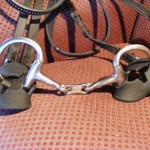
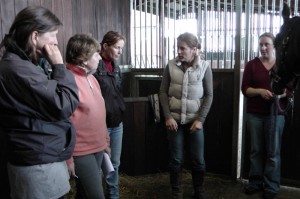
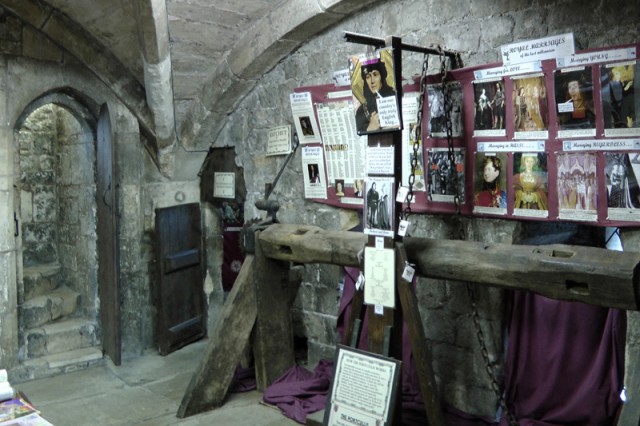
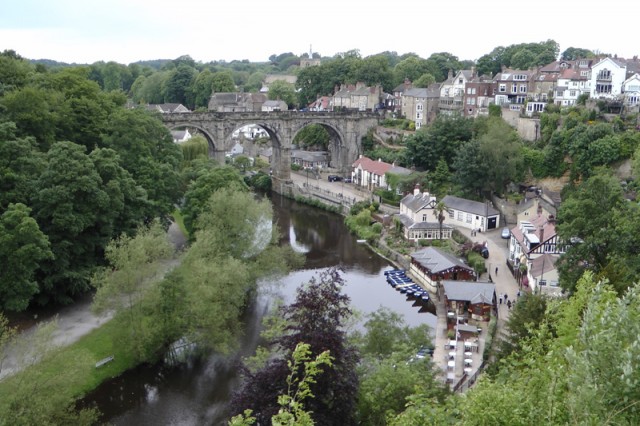
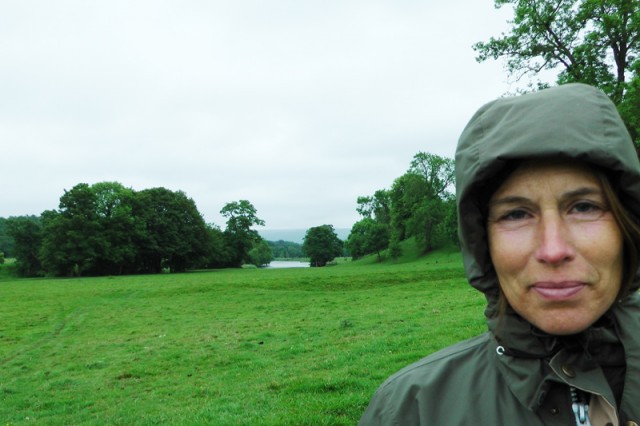
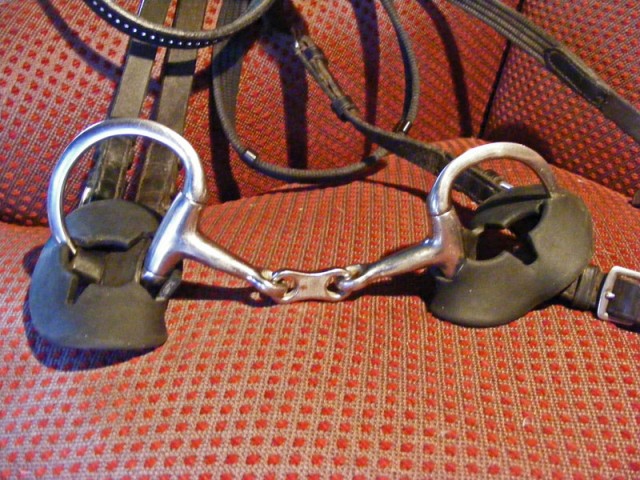



In Schoorl on June 23rd there is a bed race.
Like Farah’s video!
Warmly,
Geerteke
Hi Geerteke
Sounds like Schoorl is also a cold, wet place.
Yes, Farah’s video is encouraging, isn’t it?
Be well!
Andrew
Hi Andrew,
Just a comment on the horse fly problem. Do those special sweet itch rugs stop the flies from biting through? And what about some type of fly repellant? I’ve heard that vaseline is also a good repellant – although I haven’t tried it. As you may be aware, I have a problem with Saadi with the midges. I’ve spent a lot of time in trying to remedy this – and think I’m on the right track now. But I really do have to keep him covered all summer – and even now in winter, because it has been warm and wet, the midges are still out and about. But I think we may have had our first frost this morning so that should do the trick!
Cheers,
Heather
Hi Heather
I have no idea what special sweet itch rugs are. We use lightweight nylon Amigo fly sheets from Horseware, Ireland. They seem to be very effective against the horse flies. We tried a good repellant in the past but it was a bit like trying to mop up with the shower running. Vaseline may be a good repellant but I would be very concerned about inhibiting the horse’s ability to breathe through the skin.
Fly sheets are probably not going to be very effective against midges, because the latter are so small. A good lightweight cotton rug is likely to be better.
May you, Saadi et al. enjoy the repite from the flying bugs that winter provides!
Take care!
Andrew
Dear Andrew, I just had a ‘call’ to check your blog for any replies from you as I have not had one yet and sometimes you take a little while longer to reply, but I see that you did so something has not entered my mailbox for some reason. However I am glad I did listen to my intuitive voice.
At the same time I wanted to add another comment to the below QUOTE…..
QUOTE….Still, recently I find myself with the nagging feeling that, although evidently beneficial to the horse, this modality largely remains a palliative and will continue to do so as long as owners insist on treating their horses as little more than tools for the pursuit of their own interests and on raising and keeping them in a manner which creates the very conditions that cause the problems addressed by The Equine Touch……UNQUOTE
In many more fields there is the situation where for example the therapist can help and support a measure of cure. Or at least get a movement towards rediscovering and or re-establishing some sort of balance in order for the selfhealing capacity of the body to do its work.
However, that is something else, I have the feeling, than healing mind, body and soul. Perhaps the former is 3-dimensional whilst the latter is 4- or even 5-dimensional.
Healing mind, body and soul and eventually help and support some else therein, can only done by the therapist if the therapist him or herself has gone through/experienced sufficient healing. Has experienced sufficient self realisation. Has had the courage to let his or her awareness grow. The courage is evident as with growing awareness one continuously has to deal with looking oneself in the eye.
That is the reason why I do what I do….HUMANIMAL HOLISTIC COACHING. Using different modalities of which the Bowen Technique (the Equine Touch is inspired by the Bowen Technique as far as my information goes) is one. Using Animal Communication, which Vicky is also busy with. I am also practicing Human (or Humanimal to be more precise) Communication. And at present I am very much interested in the possibilities of the NES Provision Body Field Scan and the MiHealth that has been added recently. I have been using the NES’s scanning device for the last 2 1/2 years with succes and am excited about the positive effects of the MiHealth both in combination ALWAYS with providing insights.
It requires being prepared to look beyond beyond beyond the Milky Way. Venturing into the unknown. The unknown of the inner self before being really ready to venture into the other’s inner self. Then one suddenly faces the challenging question “is the inner self really so different from the other’s inner self and am I not again looking myself in the eye”.
The horse plays a very important role in this evolution, don’t you think. If we as therapist are able to be as loving, as adaptable, as considerate, sometimes as rude and as challenging and straightforward as a horse, maybe then and maybe only then will we be able to get many more horse owners’ attention and willingness to listen and look oneself in the eye. Not be scared to death ready to run away. At the same time throwing all kinds of judgements in the therapist’s direction to justify their fear.
That is why I do not have so many clients yet. They will come though. I just have to be patient. This cannot be pushed. Times will change. They are already changing but that wheel turns very slowly as it takes courage, as I mentioned above, to look oneself in the eye.
It gives a huge responsibility to the therapist to treat the client with or without his or her horse and at the same time to keep radiating love. That sounds easier than done. The majority of us humans, so also horse owners, have the conviction that they are doing alright. Doing the best they can.
And of course they are doing alright and doing the best they can within the boundaries of their knowing.
So my suggestion to you, although I not at all want to sound like a teacher as I do not have to teach you or anybody anything, is to continue ‘developing’ yourself in the direction your QUOTE mentions.
Love,
Geerteke
Dear Geerteke
Apologies for not replying to you sooner. We are in Greece at the moment with the result that everything is moving at a slower pace.
As usual, the essence of your comment is spot on and again I have nothing more to add.
Be well!
Andrew